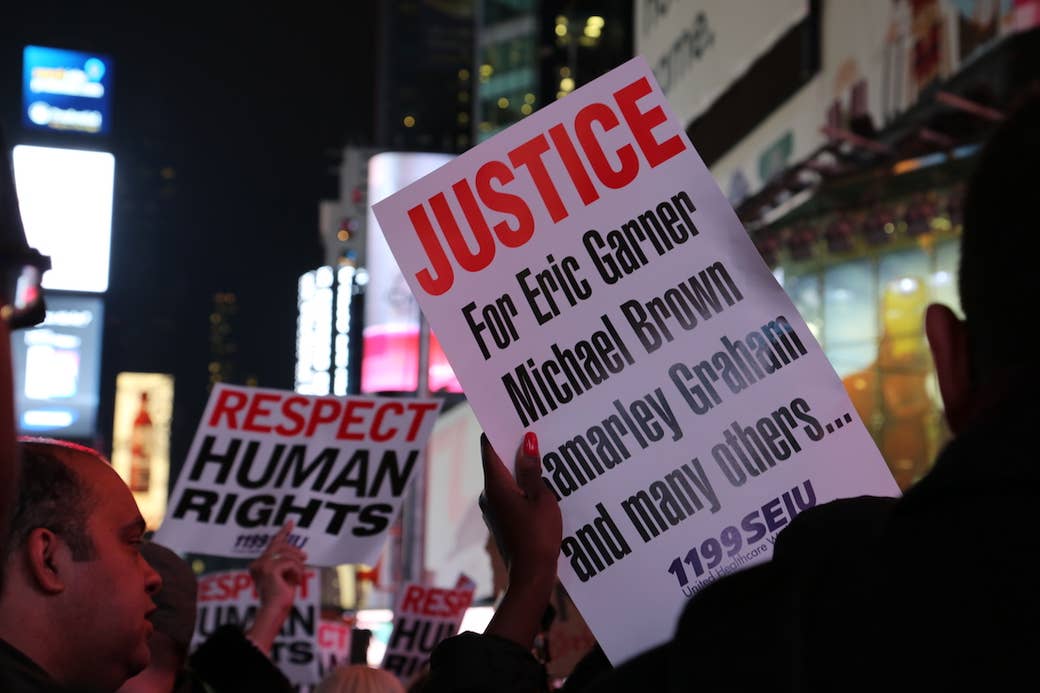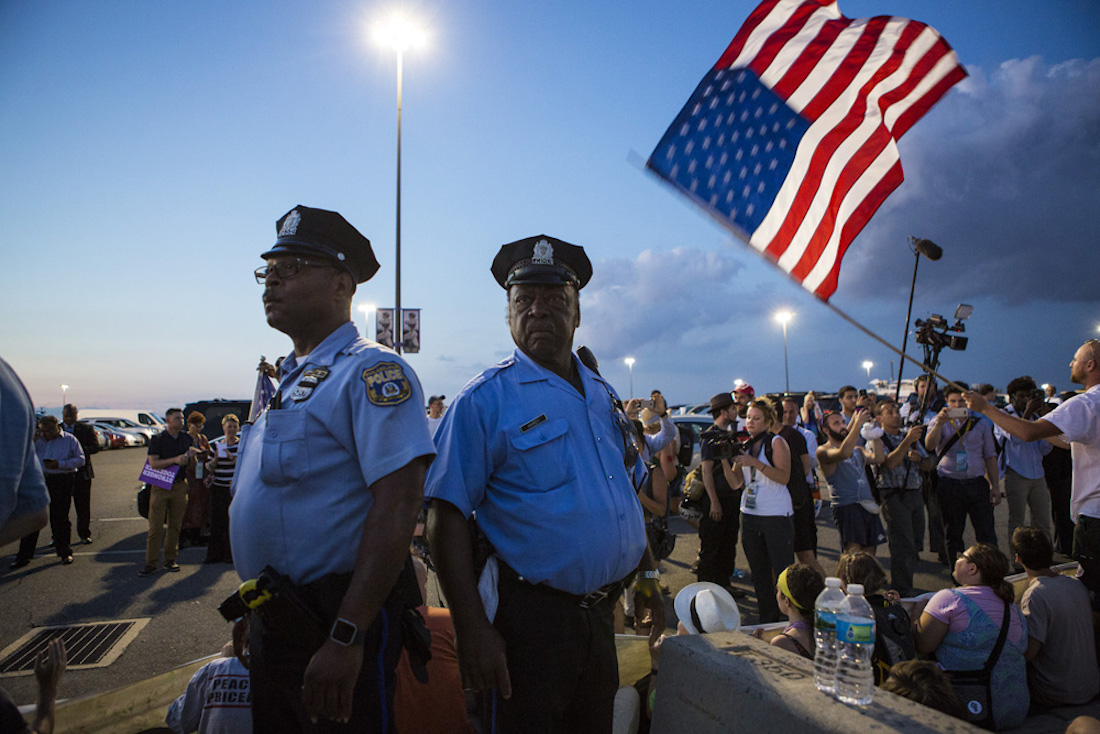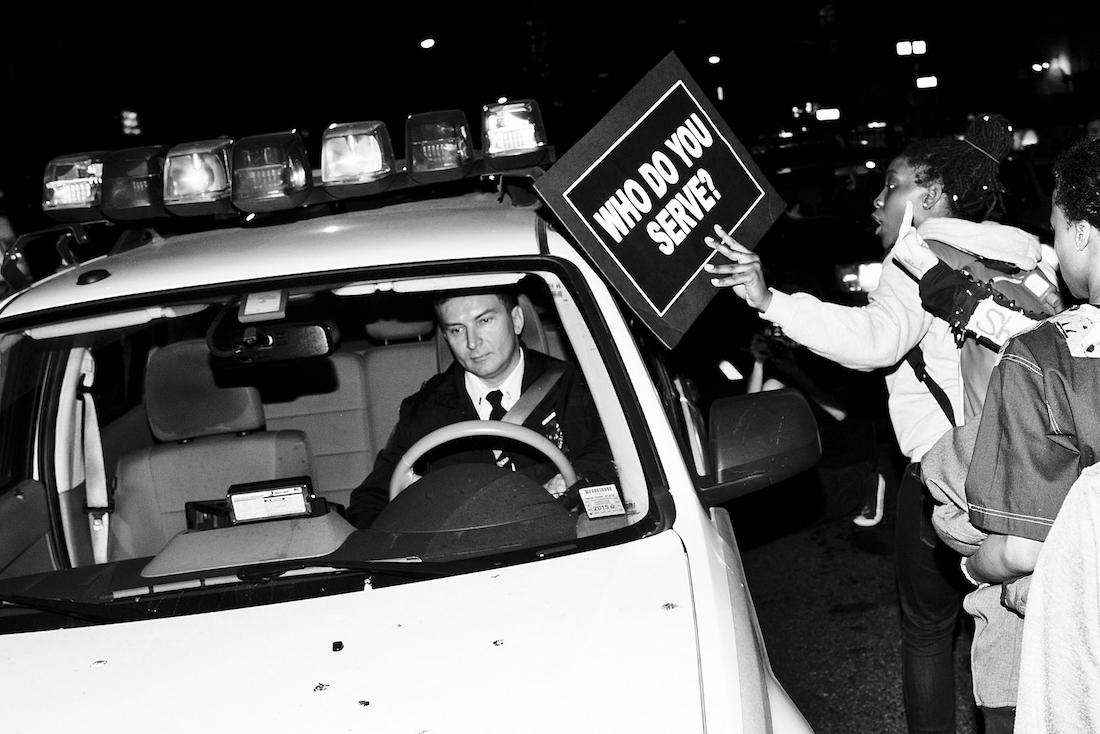
This story is part of an editorial series examining racial discrimination as the driving force behind mass incarceration in the United States, in partnership with Ava DuVernay’s ‘13TH.’
In the era of smartphones and social media, it seems as if not a week can go by without a police interaction or shooting going viral. And while police officers have consistently clashed with black Americans for centuries, it is today that police shootings and the criminalization of color has became part of the national conversation. In the wake of dozens of high profile shootings in the last few years alone and subsequent Black Lives Matter protests, some law enforcement officials and elected politicians are trying to change the way policing works for communities of color.
While the majority of white Americans believe the police in their communities are faithfully executing their duty to protect and serve,a full 84 percent of black people in this country believe that they are treated less fairly by the police—and not without reason. Black people aremore likely to be stopped by police, aredisproportionately killed by police, and are routinely arrested or harassed by law enforcement for doing things that white people seem to get away with.
The lack of equality and justice has left a bitter taste in the mouths of many in the black community. It has also left the federal government and law enforcement agencies dedicated to community policing scrambling to come up with suitable reforms that will allow the police to be policed.

Perhaps the most well known mechanism for holding police departments accountable is the Department of Justice investigation. The infamous 1994 crime bill granted the DOJ the power to launch investigations into police departments suspected of violating civil rights. However, without a robust national database on police practices and a lack of resources, only a handful of American police departments have even been investigated. The investigations commonly end in consent decrees, an agreement between the DOJ and the police department in question to reform their practices. But these agreements have hardly led to any concrete actions. In fact, the Cleveland Police Department was investigated by the DOJ twice in a ten-year period.
President Barack Obama and Attorney General Loretta Lynch’s responses to the need for police reform have been a mix of stronger input from the federal government as well as rebuilding community trust through community oversight and better training practices.
Last December, the Department of Justice announced its newPolicing Practices and Accountability Initiative as part of its Office of Community Oriented Policing Services. The new initiative’s purpose is to oversee reform and help law enforcement agencies implement the recommendations from the President’s Task Force on 21st Century Policing which included implementing improved training for officers and collecting data on policing.
“The last thing I wanted to do was become a police officer,” says Noble Wray, who was tapped to lead the new initiative, with a laugh. The 30-year police veteran had grown up during the civil rights era in highly segregated Milwaukee, Wisconsin. “My family was very much involved in the Civil Rights Movement,” he recalls. “I remember the police in riot gear.” But a schoolteacher slowly started to plant the seed that would later lead him to joining the Madison Police Department. “You can complain about it or if you really want reform, you can be a part of it,” Wray says his teacher told him.
Wray became a police officer in the 1980s immediately after college and spent 30 years with the Madison Police Department, serving 10 years as department chief. After his retirement, Noble Wray continued to do police work by focusing on training law enforcement agencies with the Department of Justice on fair policing and best practices.

However, it’s sometimes difficult to pin down what fair policing even looks like. Right now, media outlets and activists collect the most comprehensive data on police killings, but the Department of Justice and the Federal Bureau of Investigations have been trying to take the lead in implementing national practices to improve policing in communities across the United States.
“We don’t have good data on what will improve those police departments,” laments Samuel Sinyangwe, an activist and data scientists who works with Campaign Zero. But that could be set to change. The Department of Justice is finally taking the steps to begin collecting data on use of force. In 2014, Congress passed the Death in Custody Reporting Act, which required state and federal law enforcement agencies to report data about civilians who died during interactions, or in custody of law enforcement. The law also allowed the Attorney General to fine states that didn’t comply but didn’t include any requirements for non-lethal uses of force.
So, the proposed program, which is currently being developed by the FBI, is an effort to collect non-lethal use of force as well—however, unlike the DCRA, the DOJ has not announced that there will be mandatory reporting requirements for non-lethal uses of force. “We need the database,” says Wray. “It’s part and parcel to our legitimacy, and it should be mandatory.”
The database could provide crucial insight into how we want our police departments to operate in our communities. “We need national standards, so there are some guidelines to what is acceptable policing,” says Judith Browne Dianis, who is the executive director of the Advancement Project, a Washington, D.C.-based civil rights organization.
Collecting data on how local police departments function would also offer an insight into what kind of training different departments need. “I think we need a wholesale retraining of the police,” says Cenk Uygur, the founder and host of The Young Turks. “We're now training police to panic.” According to Uygur if cops believe that everything is a threat and their only job is to get home, as opposed to protecting and serving citizens, then they’re more likely to shoot first and ask questions later. Uygur finds himself frightened by how often police officers say they were following protocol after a shooting. “The protocol was to execute someone within two seconds,” he says in reference to Tamir Rice.

A type of training that’s beginning to gain popularity among police departments is implicit bias training. “Dealing with stereotypes is something law enforcement has been struggling with for three and a half decades,” explains Wray. But understanding that we all, not just cops, have implicit biases and how it affects policing has helped some police officers come around to this type of training.
In October, New Jersey Attorney General Christopher Porrino announced that all of the state’s police officers would berequired to undergo continuing education that includes racial profiling and implicit bias. But for every imitative like New Jersey’s, there are many more police departments that don’t have adequate training.
According to thelatest data provided by the Department of Justice, police officers nationwide receive an average 60 hours of training on firearm usage, but only eight on community policing practices, like implicit bias. “If we actually cared about the police serving our communities and all of our communities, we'd train them on these matters,” says Cenk Uygur. “Because if you thought your kid's life would depend on it, you'd insist on it.”
Collecting data on police use of force can also help the Department of Justice easily identify problematic departments and help the agency invoke the power of the purse. Annually, the DOJawards $2 billion to local police departments around the country. For Dianis, withholding funding from police departments that routinely violate civil rights would work to hold cops, mayors, and city councils accountable. “If everyone feels the consequences at the top and if they feel like funding is at stake,” says Dianis, “then they will move to put in training policies. I think it’s an important hook for the federal government.”
But implementing a national standard of policing, tied to federal funding or not, would certainly not be embraced by every law enforcement agency. “I don’t think that one size fits all,” says Wray about the many different kinds of communities and law enforcement agencies. “There would be backlash. Not everyone agrees that implicit bias is even an issue,” he says of training that would require police officers to examine their own stereotypical beliefs. But not requiring police departments to meet a threshold for training can create obstacles. “Every community should have some say on how policing is working,” says Dianis. “Having no way of enforcing the rules or having no consequences really makes it quite useless.”

As well as better training, the President’s Task Force on 21st Century Policing puts a strong emphasis on community oversight. “There has to be community involvement,” says Dianis. “People impacted by over-criminalization by the hands of police should be able to reimagine how safety works for their communities.”
And to some national oversight can only go so far when it comes to policing the police. “The Department of Justice could be doing a lot more,” says Sinyangwe, “there’s an increased role they should be playing but ultimately, a lot of this work needs to be supported by mayors and city councils.” The groups most impacted by police have to be the main drivers behind community oversight as well, says Sinyangwe. Real community oriented policing encompasses all the stakeholders, not just those at the very top.
According to Noble Wray, it is of the utmost importance for community members to have a voice in policing and many police departments do have community oversight mechanisms, but the citizens who are engaging are the least impacted by policing problems. Building a framework so that the voices of all and not just some are heard is pertinent to community involvement. “The people we’re missing are the people who are having high contact with law enforcement right now,” explains Wray.
Community involvement is a one of the main pillars of good policing because there is frequently little to no transparency within departments and police officers are hardly ever held accountable for deaths that occur in their custody. After Freddie Gray’s died from injuries he sustained from a ride in a police van in Baltimore, not a single officer involved was held responsible. This, of course, came as no surprise to the city.
Bringing charges against police officers is rare and actual convictions are nearly impossible. “You can't ask local police to bring accountability to their friends,” says Uygur. Local prosecutors often work closely with police officers and maintain strong professional relationships with law enforcement agencies. It is, “the most obvious conflict of interest all the time,” Uygur continues. “Everyone knows you can indict a ham sandwich,” he says referencing the old saying about how prosecutors can indict almost anyone they’d like—however cops seem to be the one exception. “Anyone who thinks that's a coincidence is being purposefully obtuse, or just happy to wallow in their own bias,” says Uygur.
Despite the feeling that the United States is at a crossroads in policing, reform can’t and won’t happen until there’s a consensus that it’s even needed. Police departments are able to operate in a shroud of secrecy not afforded to other government agencies, despite being funded by taxpayer dollars. According to Judith Browne Dianis, police have been able to work under the radar for decades. “They exist in a bubble where they have become the untouchable.” For centuries, safety and law enforcement have been intrinsically linked. “Because [safety] is one of the highest rated values in this country,” says Dianis, “they’ve been able to get a pass.

